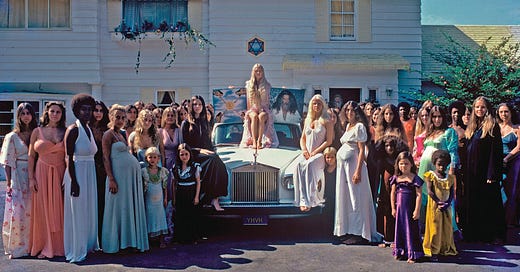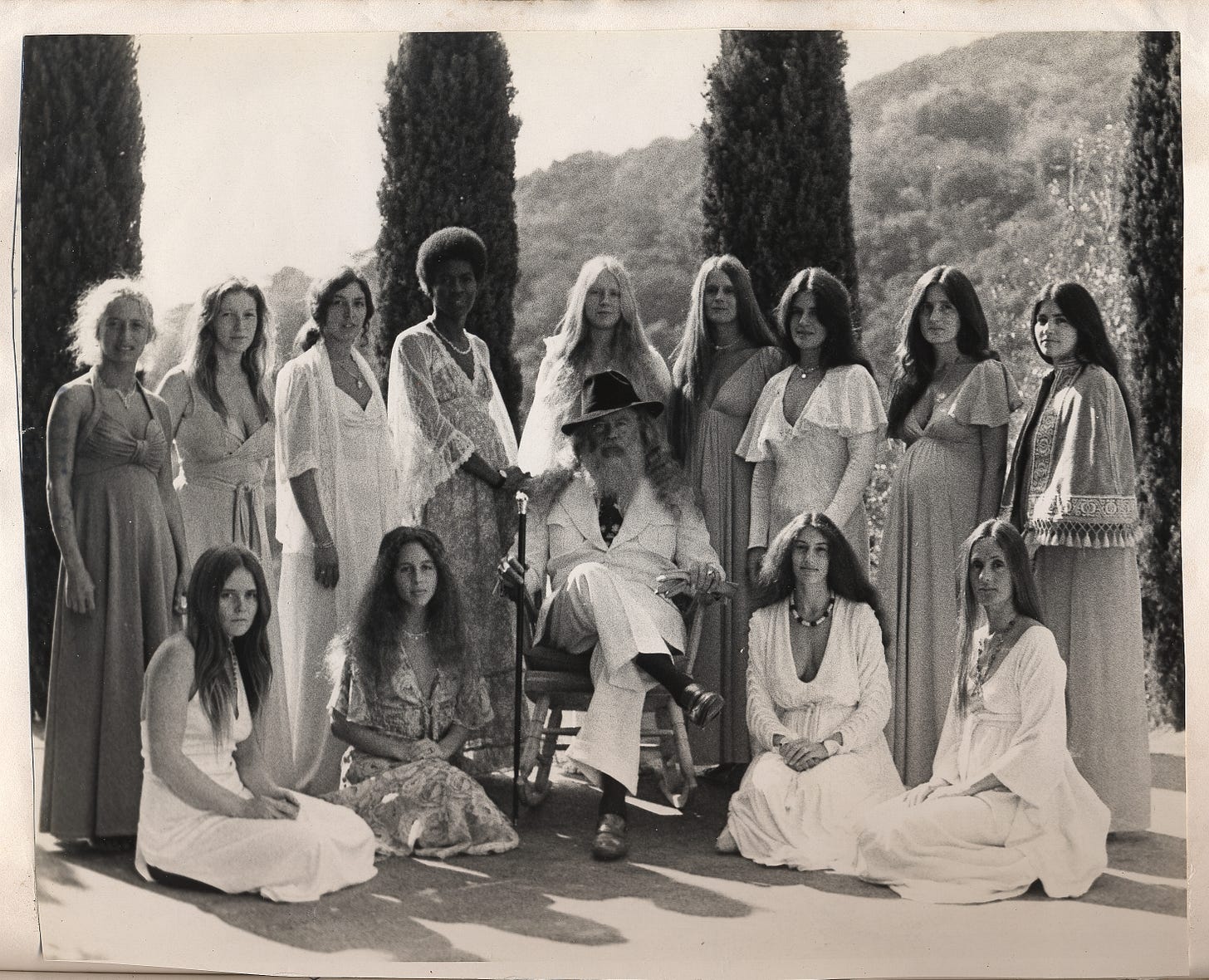A Minute With Charlie Kitchings
Hi! This is a newsletter about artists I like.
I began acquiring art through some friends that worked in galleries. I started small, working on a limited budget, for stuff I could afford. As time passed, my collection grew, and it was exciting to watch many of the artists I'd collected go on to bigger shows and critical acclaim.
My goal with this newsletter is to make a digestible resource for anyone interested in artists that are making great (and still affordable!) work, whom you haven't heard about... yet.
Charlie Kitchings is truly one of the nicest people/persons I’ve ever met. A decade ago, or more, I had a shop in LA and used to frequent Charlie’s gallery, Ambach and Rice, because his exhibits were always great and he was always open to hearing my terrible thoughts for what to do in my shop. Fun fact, a hotel threatened to sue my shop/brand and I got a little bit of money to change the name, and with that $, I bought an artwork from Charlie.
Life happens, especially with kids, and Charlie and his wife moved to Oregon for a change. When he told me about the move, we had recently left LA for the midwest and Charlie is someone that offer’s incredible advice whether it be on art, parenting, or just life in general. He does it with ease and I think that laid-backness is what draws people into him and why everyone wants to be in the orbit of the Kitchings crew.
It’s no surprise that his new endeavor, Orchestre, is already drawing iconic companies to host their retreats there and witness the greatness of Amanda and Charlie. Thanks Charlie!!!!
Tell us how why you wanted to start your gallery and how it began?
CK: My wife Amanda and I founded Ambach & Rice in Seattle, Washington in 2009. At the time most of the galleries in town were focused on exhibiting the work of regional artists. We were inspired by the idea putting regional artists in a more national and international context by inviting artists from abroad to exhibit in the gallery. Our program was always driven by our own curiosity and interests. We ignored market trends, perhaps to our detriment at times.
In 2011 François Ghebaly invited us to host a pop-up exhibit with Eric Yahnker in Chinatown in Los Angeles. While I was in town my friend and mentor Marc Foxx invited me to check out a space that neighbored his gallery on Wilshire Boulevard. Our lease was ending on our Seattle space and we were ready for a change. We moved the gallery to Los Angeles shortly thereafter. Los Angeles was an incredibly supportive community. At the time it was still viewed as an outlier in the artworld which meant that it fostered a more experimental spirit. It was a very artist centric town which I loved. Los Angeles has changed a lot since we left but I still love to visit.
Tell us about what you’ve been to since closing the gallery in LA?
CK: When our lease ended in Los Angeles, Amanda and I opted for a radical change. We decided to leave the city and move to the Columbia River Gorge, around an hour east of Portland, Oregon, in the foothills of Mount Adams on the White Salmon River. There were no structures on the land we bought so we began by erecting a yurt which we lived in for 2 ½ years while we built our home, an experience our children will never forget. After years of travelling for work and running the gallery I was eager to have a more active role in my children’s lives. Moving to a rural area enabled me to shift gears. I continued to do some art advisory for a handful of clients for a number of years and began working with SunPress Vinyl, a record manufacturing plant based in Miami. I am a huge music lover and have collected records for years.
This year we launched Orchestre, a private event space on our property that hosts offsites for corporations and foundations. Amanda has a ceramic studio that is attached to the kitchen dining space which will increasingly synergize with the space over time. After closing the gallery, I discovered a love of cooking which propelled the project. I now cook all of the food for our events.
How did “The Source” project come about ?
CK: On a whim I reached out to Isis Aquarian, the Source Family archivist and historian, to get a sense of what was in archive. I was considering exhibiting parts of the archive with artworks by contemporary artists exploring notions of utopia or paradise lost. Isis happened to be in Los Angeles when I reached out (she lives in O’ahu) and she came by the gallery and we hit it off. The exhibit never came to fruition, but we completed a book together with our collaborator Jodi Wille who co-directed The Source documentary. Family: The Source Family Scrapbook will be published by Sacred Bones this fall. In addition to the book we assisted in placing the archive in UCSB’s permanent collection, something I am very proud of.
The goal of this newsletter is hopefully educate people on ways to get into collecting and introduce them to people in the art industry that have some great perspective, any tips/advice ?
CK: Buy with your eyes not your ears, especially in the age of social media. Don’t let hype distract you from your own interests and instincts. Art can be an investment, but it is an extremely risky one when buying the work of emerging artists. I would liken it to investing in startups. I’m not saying this to discourage new collectors from supporting the work of lesser-known artists. Every time you purchase a work by a young artist you are actively casting a vote for art history; you are participating in the production of contemporary culture in a meaningful way. Just don’t go into expecting to get rich. If you are interested in art as investment, purchase the work of established blue chip artists. I believe that art is best appreciated when you have the privilege of living with it on a daily basis. Far too much art ends up in storage, never to see the light of day. I love that certain artworks in our collection have taken on new meaning over the course of living with them, proof that art, like music, is a living entity that evolves with time.
I would also encourage new collectors to explore genres, mediums and styles that are out of fashion. Look where others are not, especially when you find emotional resonance in these areas. This can increase your likelihood of access to works that were previously inaccessible until they fell out of style. The artworld is cyclical, figuration may be popular now, but it will be passe in the not too distant future. Play the long game and buy what you love. Take your time building a collection that reflects your values and interests.
What else do you have planned on the near future ?
CK: We are very excited to continue developing our programming at Orchestre. I’m excited to collaborate with other chefs, philosophers, scientists, artists and musicians to create interdisciplinary events in the space. I also have a couple of projects I’m interested in pursuing in relation to culinary publishing.
Now that you are out out of the “art world,” have you found yourself enjoying your own collection more ? Or not so much?
CK: Since closing the gallery, I feel far more liberated in regards to my relationship to collecting. I am no longer as focused on contemporary art and have begun to shift more of my energy to collecting design objects, books and records and ephemera. I’m also very interested in folk art. I gravitate towards work that feels as if it was made out of necessity rather than some sort of professional obligation. The sort of work that gets produced whether there is an audience for it or not, work made with soul and generosity.
Linkage Report:
Frieze London is happening and for anyone that wants a funny and easy-listening update, listen to this week’s Nota Bene Podcast, always a great listen and they will have another dropping later in the week. ****I’m still waiting for my hat Ben!
One of my favorite artists has passed, Billy Al Bengston, a Los Angeles icon who was always making people smile. Story HERE.
Stefania Bortolami is and will always be one of the coolest gallerists of all time, bringing an art show to Vegas with some heavy hitters. More HERE.






